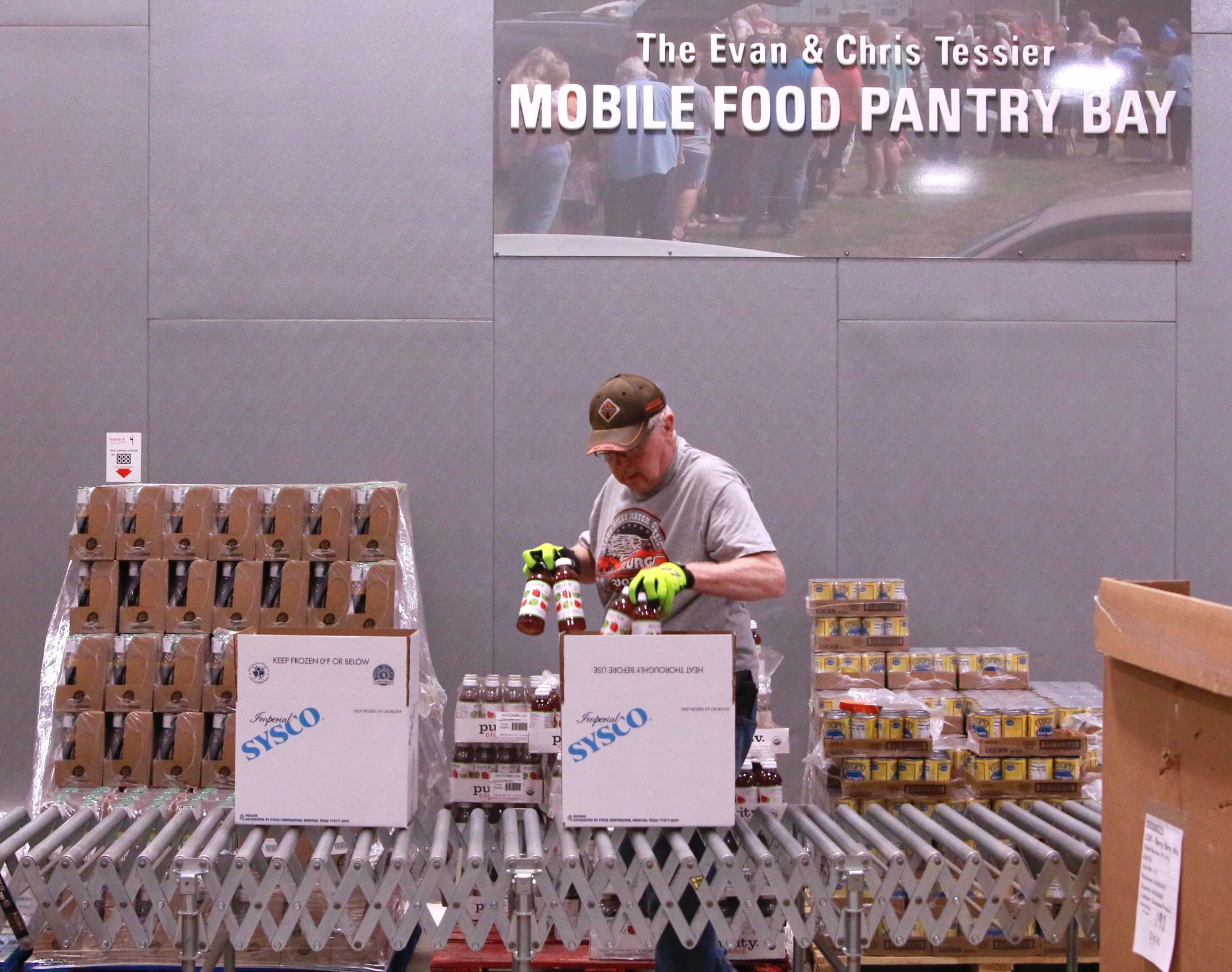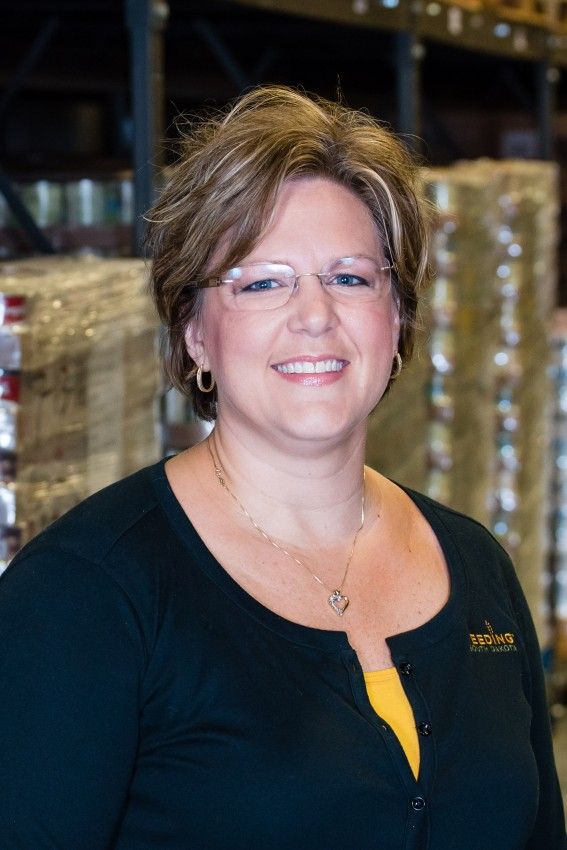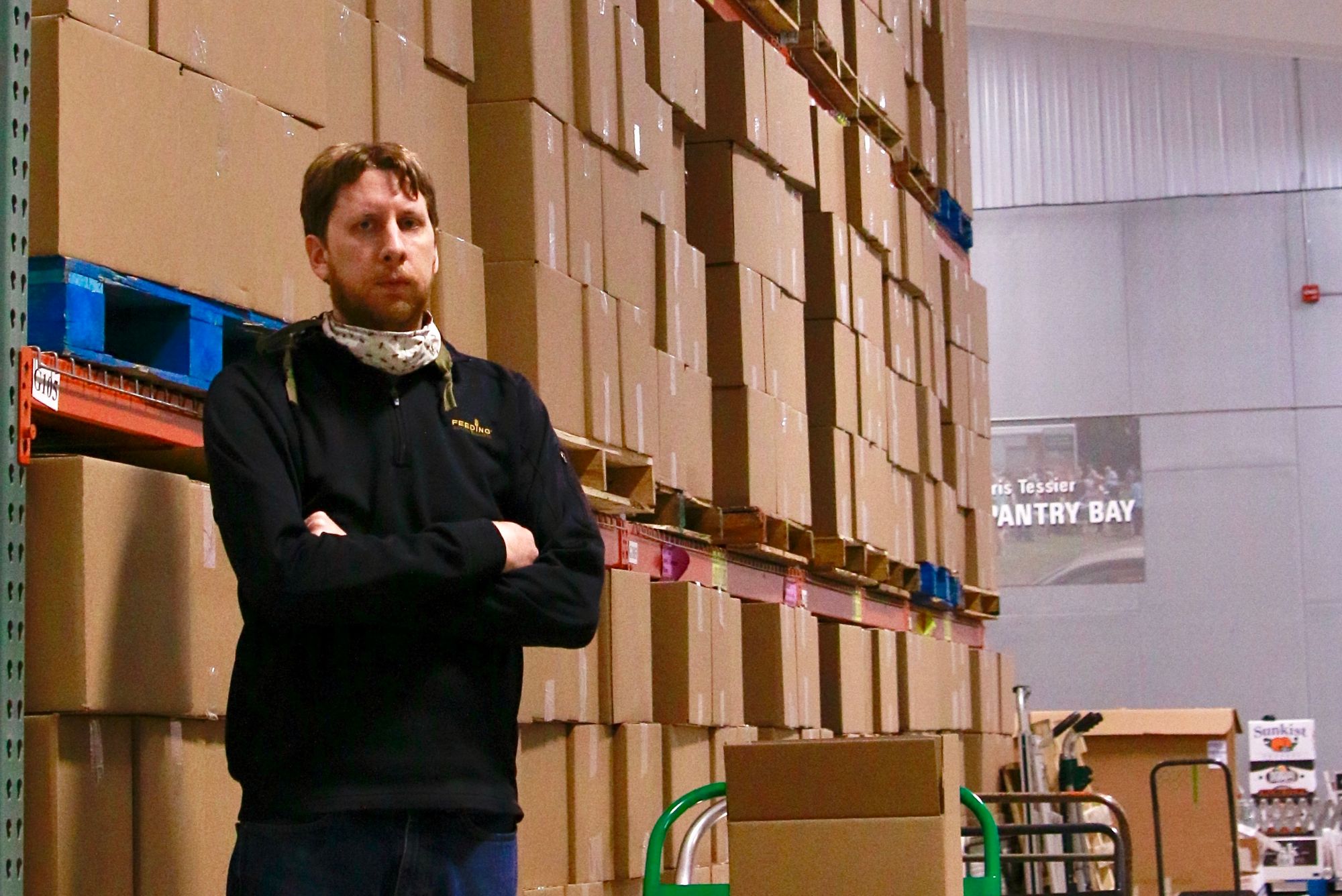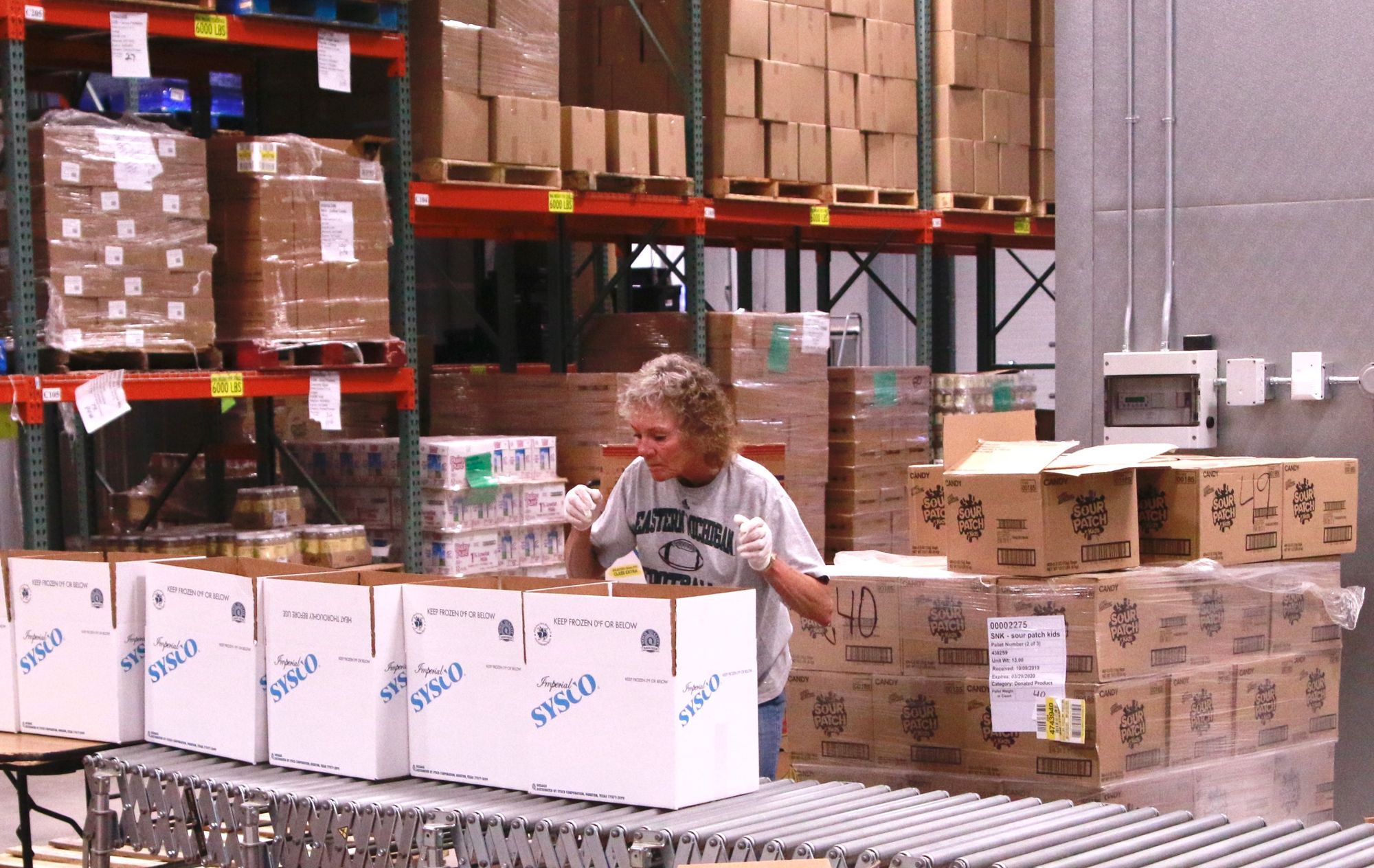Demand for food assistance among needy South Dakota residents has skyrocketed during the COVID-19 pandemic, and donations of food and the volunteers needed to help distribute it are becoming harder to find.
So far, the food collection and delivery systems in South Dakota have kept up and most families are getting the food they need.
But in early April, the state’s largest network of food banks, Feeding South Dakota, said it expected food donations to fall by half for the month. At the same time, the 211 Helpline Center — a key connection between people in need and the organizations that provide help — has seen its number of calls for help more than double.
During the month of March 2020, the 211 Helpline Center received more than 2,280 calls from people running short of food, said Betsy Schuster, vice president of program development. In all of 2019, the Helpline Center fielded slightly more than 4,600 calls for food assistance, Schuster said.
The pandemic has left thousands of South Dakota families needing help on a number of fronts, both financially and in terms of meeting basic needs.
Many of the people asking for help are doing so for the first time and have no experience in managing a severe financial crisis, Schuster said. For some, the pandemic is the first time they have signed up for unemployment benefits, sought food stamps under the federal Supplemental Nutrition Assistance Program or asked for help from food pantries, she said.
“It just compounds everything,” Schuster said. “Not only are they looking for food, but they’re also just looking for answers on what their next steps are, how do they pay rent, how do they pay their utility bill coming up. They’re tough calls.”
In February, the latest month for which data is available, there were 78,006 South Dakotans enrolled for SNAP benefits. About half those enrolled, 37,763, were children under the age of 18.
The number of people who are now, or soon will be, considered “food insecure” is not expected to fall anytime soon. The number of unemployed people in South Dakota is surging.
The first full week of April saw first-time unemployment claims in South Dakota hit 7,916, which was roughly 40 times higher than the first week of March. Demand for SNAP benefits and other government-run food security programs likely surged as well in March but data from last month won’t be available until April 20, Department of Social Services spokesperson Max Wetz said.

Meanwhile, Feeding South Dakota expects to see higher demand for its services for up to a year.
“We’re going to see the effects of the pandemic, and what we’re doing to respond to it, for six to 12 months,” said Jennifer Stensaas, communications coordinator for Feeding South Dakota.
The companies who make food products and the grocery stores who usually provide most of the food donations to Feeding South Dakota’s parent network, Feeding America, don’t have as much product to donate during the pandemic. Nationally, people have virtually stopped eating out and instead are buying more food from grocery stores which means there are fewer surplus items for grocers to donate to food banks.
Meanwhile, the separate supply chain that serves restaurants, resorts and even schools has been unable to quickly shift gears and sell products to grocers. The companies that sell foods to restaurants don’t typically have contracts to sell to grocery stores and such contracts are difficult and time consuming to secure. The food would need to be repackaged, too.
Also, creating a new delivery system to move large amounts of fresh food from fields to food banks would take too much time, labor and money for either farmers or food banks to handle while finances are already strained by the pandemic.
“The whole system is in shock,” said Evert Van der Sluis, an economics professor at South Dakota State University. “About half of the money that we spend on food is spent on food away from home. That food away from home, other than the takeout food, that market is pretty well shot. It’s gone. So now, most people are eating their food at home and that’s less expensive but switching to that new system cannot easily be done.”
Still, some suppliers for the restaurant and hospitality industries have been able to donate products locally. In one recent example, Grand Prairie Foods in Sioux Falls, which sells prepared foods for hotels and other businesses, donated thousands of packets of scrambled eggs once destined for hotel continental breakfast bars, Stensaas said. Those packets were distributed April 14 during the first of what will be bi-weekly food distributions at W.H. Lyon Fairgrounds in Sioux Falls.
Usually, most of the food Feeding South Dakota gives away has been donated either by grocers or manufacturers to its parent organization Feeding America. The donations are then divided among Feeding America affiliates based on need and population. Large donations, such as the recent pledge of 10 million pounds worth of pork products to Feeding America made by Smithfield Foods, Inc., are divided up between states too, Stensaas said. Exactly how the Smithfield donation will be divided up hasn’t been decided yet, she said.
The need for food aid has increased dramatically across America and because demand for groceries has also increased and is projected to cause a decline in food donations, Feeding South Dakota has had to start buying more food than it typically does in order to keep up with the increased need, Stensaas said. The situation has greatly added to the importance of monetary donations and cost-saving volunteer labor.
“We’ve got a couple of different things going on here,” Stensaas said. “We’re seeing fewer donated products, more purchased products and higher shipping costs. So we’re really going to be asking for funds, asking for the community to help us pay to bring this product into South Dakota.”

“We’re going to see the effects of the pandemic, and what we’re doing to respond to it, for six to 12 months ... we're seeing fewer donated products, more purchased products and higher shipping costs.” -- Jennifer Stensaas, communications coordinator for Feeding South Dakota
More volunteers needed, yet harder to find
Feeding South Dakota shuttered its food pantries in the state early on during the pandemic to ensure safety of employees, volunteers and customers, Stensaas said. Instead, the organization has switched much of its operation to pre-packing boxes and delivering them to a more diverse set of distribution sites.
As a consequence of pre-packing food boxes, the need for volunteers to pack the boxes has increased along with the demand for food aid. The pandemic, though, has limited the pool from which volunteers can be drawn.
“We used to benefit from the Department of Corrections work program. We don’t have access to that anymore, and so really we’re relying on everybody working overtime and volunteers coming in,” Stensaas said. “Those are getting fewer and fewer because people are afraid to come in. We’re doing our very best to keep people six feet apart from each other and everyone’s washing hands and using gloves and all of that, but the reality is that our workforce is getting slim.”
The problem has become particularly acute at Feeding South Dakota’s distribution hub in Pierre, which serves a wide swath of the state with its mobile food pantry trucks.
Several of the communities that the Pierre warehouse typically serves have seen up to 50% increases in demand for food aid, said Operations Manager Andy Walz. For example, 300 cars showed up at a recent drive-in food distribution in Fort Pierre, when usually there might be 200 served, he said.
“We’ve seen that rise depending on the community,” Walz said. “It varies location to location, but we’re seeing that greater increase.”
During the week of April 6-10, the Pierre warehouse expected to distribute food to between 750 and 800 households in three communities — Fort Thompson, Pierre and Reliance. Each household was slated to receive two boxes of food totaling 60 pounds; one box for shelf-stable items and another for frozen or refrigerated items. That means about 1,600 boxes with roughly 96,000 pounds of food needed to be packed by hand.

“This is a whole lot better than playing solitaire at home,” he said.
Lynelle Asher has been a regular volunteer at the Pierre warehouse for years. Asher said packing boxes is one way to do her part in fighting against the disease.
“I’m nervous but I’m still going to keep doing this,” Asher said. “If at least I’m here, I know I’m doing something.”
Asher and Zeller were beefing up the stockpile of pre-packed food boxes. Thousands of the boxes were stacked floor-to-ceiling in the industrial warehouse on April 7 awaiting delivery. There were enough boxes, Walz said, to meet demand for a couple of weeks of mobile food pantry deliveries.
Having a stockpile of boxes on hand helps ensure reserves, but also requires more volunteers to continue preparations, Walz said.
Meals on Wheels, which delivers meals directly to elderly people in need, has also seen a sharp increase in demand for its service and volunteers, said George Larson, executive director of Meals on Wheels of western South Dakota.
In Rapid City, the number of households receiving meals jumped from about 470 at the beginning of March to about 597 in early April. Many communities in his service area have seen up to a 50% increase in demand for meals, Larson said.
“We’ve made some really amazing relationships here in town with Youth & Family Services, with YMCA, and even with the city of Rapid City,” Larson said. “These organizations have actually stepped up and allowed their staff to be able to come volunteer for us.”

Communities stepping up to meet the challenge
Even with a large pool of available volunteers, Meals on Wheels has had to increase the work hours for many of its paid, part-time staff, said Larson, who may hire more workers. All told, the organization has seen an additional $150,000 worth of expenses during the pandemic to pay for more storage space, food and staff, Larson said.
“We have some truly amazing community partners.Through Black Hills Energy, the South Dakota Community Foundation, the Black Hills Area Community Foundation, there have been some very generous donations that have offset a large portion of that,” Larson said.
The future, though, is uncertain. Prominent midwest economists such as Neel Kashkari, president of the Minneapolis Federal Reserve Bank, say they are expecting the COVID-19 pandemic and the economic fallout to last up to 18 months. If that were to happen, demand for food aid would remain high.
At the same time, outbreaks of COVID-19 in meat processing facilities, such as the shuttered Smithfield Foods pork processing plant in Sioux Falls, are beginning to slow production of meat products. Processing plant closures threaten to create a longer-term disruption in the meat supply chain, which could drive meat prices higher, Van der Sluis said. Meat is already one of the most expensive items for food banks to obtain.
Similar disruptions are expected in produce markets as fresh fruit and vegetable crops become ready for harvest. Those crops often need to be harvested by hand with workers in close proximity to each other.
“This Smithfield plant closure is just one more thing that points out the vulnerability of these supply chains, whether they are global or not,” Van der Sluis said.
Feeding South Dakota officials are working to make sure the organization is able to keep providing food to those who need it, even if prices rise and supplies run short, Stensaas said. In one effort to control costs, Feeding South Dakota has been working closely with its sister organizations in Minnesota, Nebraska and Wisconsin to avoid bidding wars on food products, Stensaas said.
The organization has sought more monetary donations and has had some success, Stensaas said. Since the beginning of April, Meals on Wheels and Feeding South Dakota have secured large, new financial commitments. The Black Hills Community Foundation on April 13, announced $64,000 in grants as part of its Collective Impact Food Security Initiative. Both Meals on Wheels and Feeding South Dakota were awarded $20,000.
On April 15, MDU Resources Group, a partnership between several natural gas companies, announced it would give $500,000 to food banks and pantries, including the Lemmon, S.D. food pantry and Feeding South Dakota.
“We live in a really great state. People are really stepping up,” Stensaas said. “Some are deciding to change the timing of their annual donations and some are donating in addition to their annual contributions.”
Larson is confident that support from businesses, foundations and government will ensure his organization will continue to provide meals for those who need them. “We are going to be here today, tomorrow and into the future,” he said.



